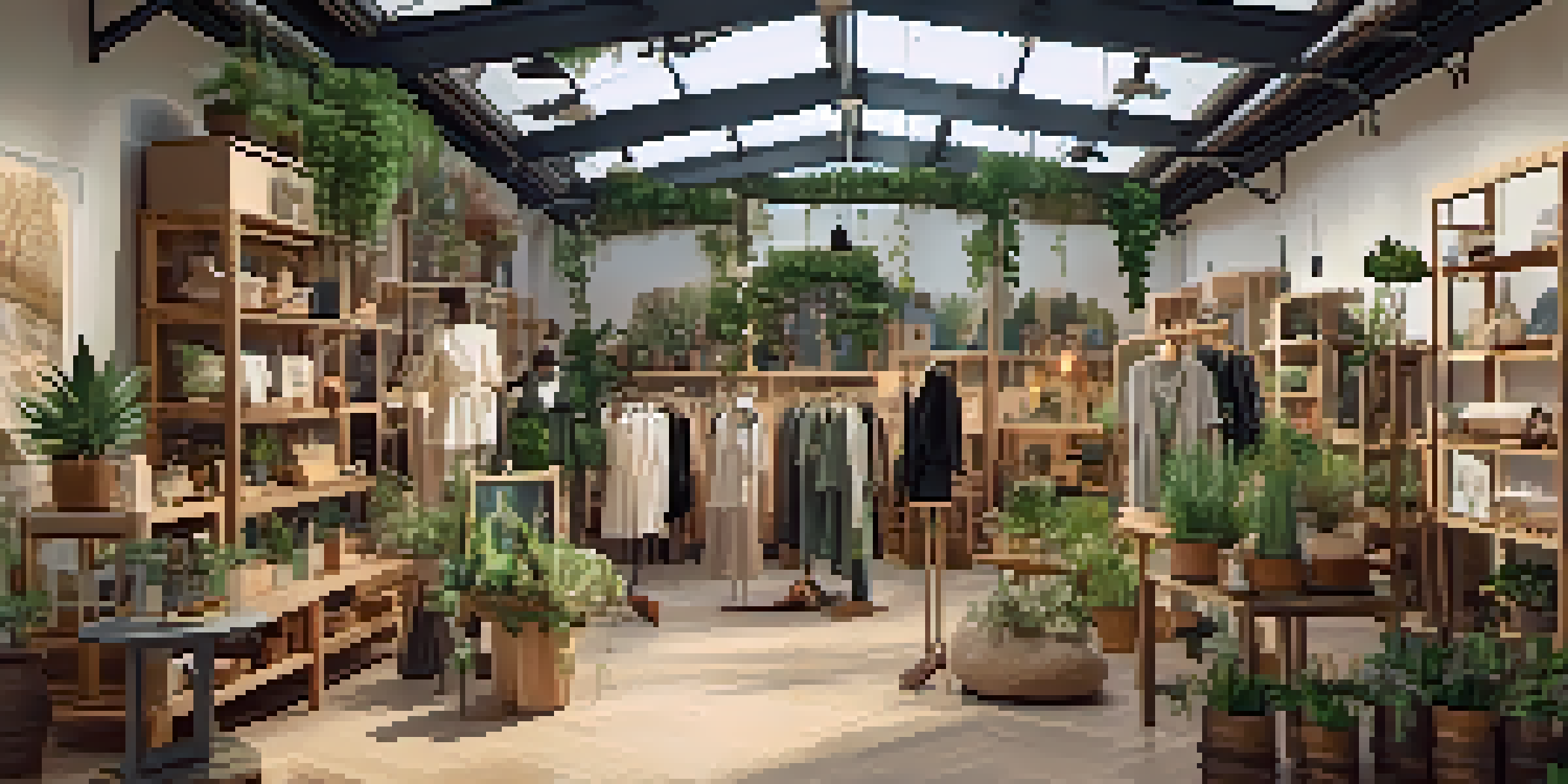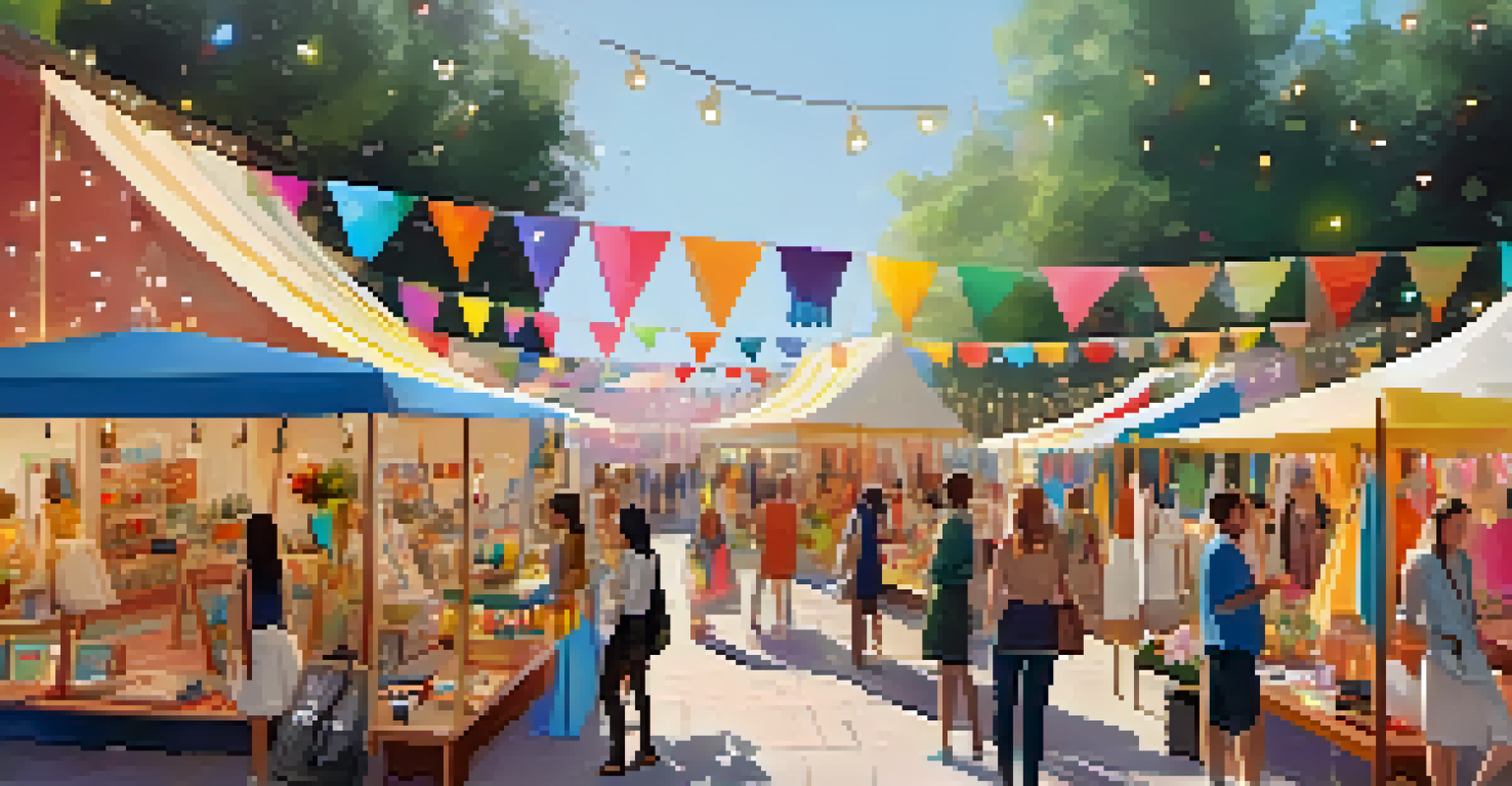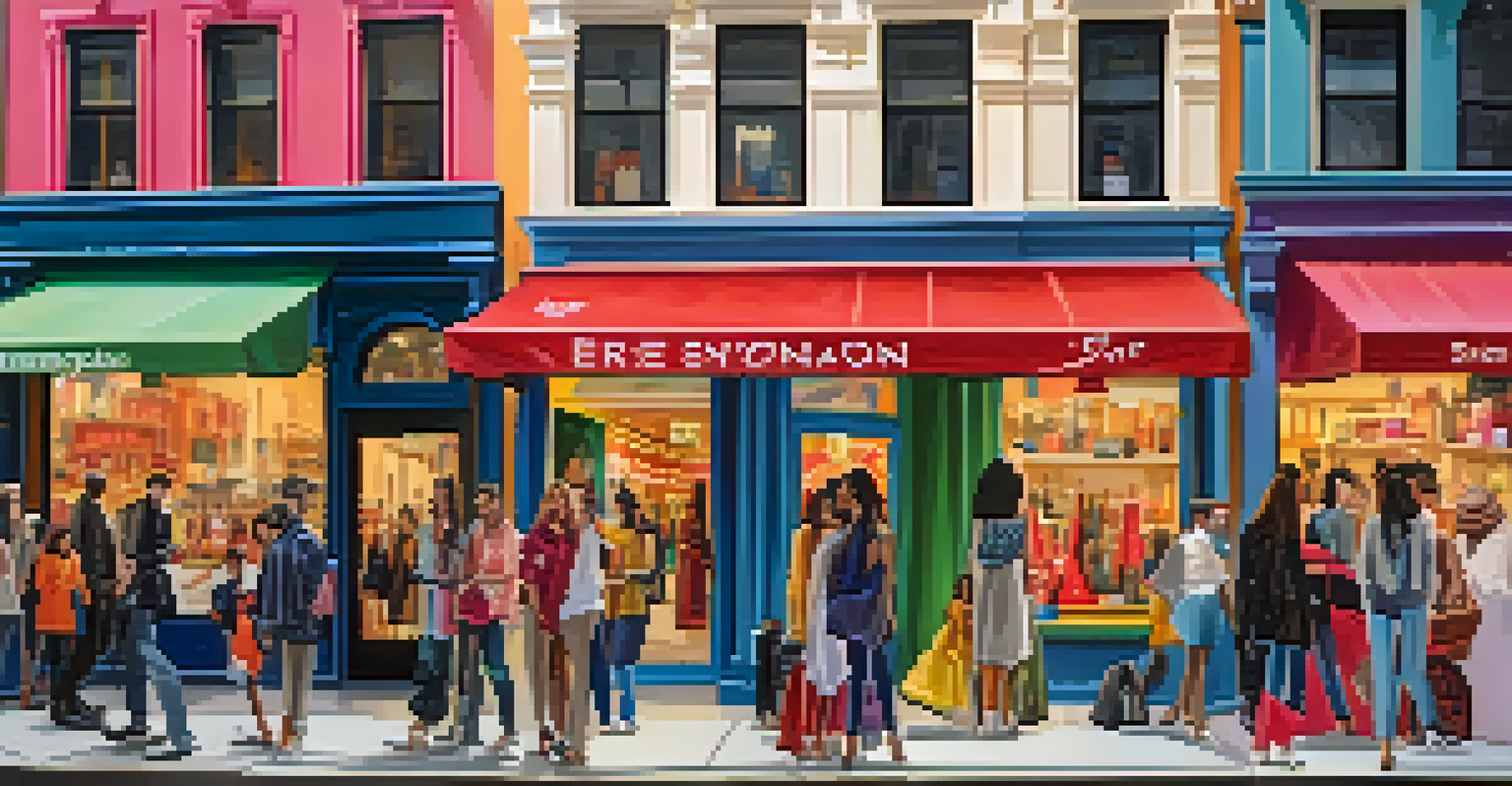Pop-Up Shops: A Trend Reshaping Fashion Retail Strategies

Understanding Pop-Up Shops and Their Appeal
Pop-up shops are temporary retail spaces that offer brands a unique way to engage with customers. These short-term setups can appear anywhere, from bustling city streets to local festivals, capturing the essence of spontaneity and excitement. Their limited-time nature creates a sense of urgency, inviting shoppers to experience something exclusive.
Retail is not just about selling products; it's about creating experiences that resonate with consumers.
The appeal of pop-up shops lies not only in their novelty but also in their ability to create immersive brand experiences. By transforming a mundane shopping trip into an engaging event, brands can foster a deeper connection with consumers. For instance, a fashion brand might host a pop-up showcasing a new collection along with live music and interactive activities, turning shopping into a memorable occasion.
Moreover, pop-up shops allow brands to test new markets without the long-term commitment of a permanent location. This flexibility is especially beneficial for emerging designers or small businesses looking to gauge customer interest in various locations. Ultimately, pop-up shops serve as a dynamic platform for creativity and innovation in fashion retail.
The Role of Experience in Fashion Retail
In today's retail landscape, offering a unique shopping experience is crucial for attracting consumers. Traditional retail methods often fall short of engaging customers, leading to a demand for more interactive and personalized experiences. Pop-up shops contribute to this shift by creating environments where shoppers can explore and connect with brands on a deeper level.

For example, a pop-up shop might include workshops or styling sessions, allowing customers to interact directly with products and experts. This hands-on approach not only enhances the shopping experience but also builds brand loyalty. When consumers feel a personal connection to a brand, they are more likely to return for future purchases.
Pop-Up Shops Create Unique Experiences
These temporary retail spaces transform shopping into memorable events, fostering deeper connections between brands and consumers.
Additionally, the experiential aspect of pop-ups can foster community engagement. By collaborating with local artists or businesses, brands can create a vibrant atmosphere that resonates with the local culture, making the shopping experience feel relevant and authentic. This emphasis on experience is reshaping how consumers perceive and engage with fashion retail.
Leveraging Social Media to Drive Traffic
Social media plays a pivotal role in the success of pop-up shops, serving as a powerful tool for driving traffic and generating buzz. Brands can utilize platforms like Instagram and TikTok to showcase their pop-up events, share behind-the-scenes content, and create excitement leading up to the launch. This digital engagement not only attracts potential customers but also encourages them to share their experiences.
Sustainability is not a trend, it's a responsibility that brands must embrace to build trust with their customers.
For instance, a brand might run a social media contest where followers can win exclusive access to a pop-up event. This strategy not only increases visibility but also incentivizes customers to participate actively. As shoppers post photos and tag the brand, they amplify the reach of the pop-up, effectively transforming customers into brand ambassadors.
Moreover, leveraging user-generated content can create a sense of community around the brand. When customers share their experiences, it authenticates the brand's message and encourages others to join in. This symbiotic relationship between pop-ups and social media is a crucial element of modern retail strategies.
Sustainability and Pop-Up Shops
Sustainability has become an essential consideration for many consumers, influencing their purchasing decisions. Pop-up shops can align with this trend by emphasizing eco-friendly practices and products. By utilizing temporary spaces, brands can reduce waste associated with permanent retail setups, making them a more sustainable option.
For example, a fashion brand may choose to host a pop-up shop featuring ethically sourced materials or upcycled clothing. Not only does this approach resonate with environmentally conscious consumers, but it also positions the brand as a leader in sustainable fashion. The transparency of pop-ups allows brands to tell their sustainability story directly to customers.
Social Media Boosts Pop-Up Success
Leveraging platforms like Instagram enables brands to generate excitement and engage customers, turning them into brand ambassadors.
Additionally, pop-ups can encourage responsible consumption through curated collections that promote quality over quantity. By offering a limited selection of thoughtfully designed pieces, brands can inspire consumers to make more intentional purchasing decisions. This commitment to sustainability can help brands build trust and loyalty among eco-conscious shoppers.
Challenges and Considerations for Brands
While pop-up shops offer numerous benefits, they also present unique challenges that brands must navigate. One primary concern is the logistical aspect of setting up a temporary space, which includes securing permits, finding the right location, and managing inventory. A well-planned execution is crucial to ensure a seamless experience for both the brand and the customers.
Additionally, brands must be prepared for varying levels of consumer engagement. While some locations may draw large crowds, others might not attract the anticipated foot traffic. Understanding the target audience and conducting market research can help brands make informed decisions about where and when to launch their pop-ups.
Finally, measuring the success of a pop-up shop can be more complex than traditional retail metrics. Brands should establish clear goals, whether it's increasing brand awareness, testing new products, or driving immediate sales. By analyzing customer feedback and sales data, brands can refine their strategies for future pop-up endeavors.
The Future of Pop-Up Shops in Fashion Retail
As the retail landscape continues to evolve, pop-up shops are likely to remain a significant player in fashion. Their ability to adapt to consumer trends and preferences makes them a versatile strategy for brands. As technology advances, we may see even more innovative pop-up experiences that leverage augmented reality and digital interactions to enhance customer engagement.
Moreover, the rise of e-commerce has not diminished the relevance of pop-up shops; instead, it has provided brands with new opportunities to create hybrid experiences. Online brands can use pop-ups to establish a physical presence, allowing customers to interact with products in person before making a purchase. This blend of online and offline experiences can help bridge the gap between digital and tangible shopping.
Sustainability in Retail is Key
Pop-up shops can promote eco-friendly practices, appealing to environmentally conscious consumers through curated and responsible collections.
Ultimately, the future of pop-up shops in fashion retail will be shaped by the brands that embrace creativity and adaptability. As consumer preferences change, those who can pivot and innovate will thrive in this dynamic landscape, ensuring that pop-up shops remain a staple of the retail experience.
Conclusion: Embracing the Pop-Up Phenomenon
Pop-up shops are more than just a fleeting trend; they represent a shift in how consumers engage with fashion brands. By embracing the pop-up model, retailers can create memorable experiences that resonate with customers and foster loyalty. The combination of exclusivity, social media engagement, and sustainability makes pop-ups a compelling strategy in today's retail environment.
As brands continue to explore the potential of pop-up shops, they will need to remain agile and responsive to the ever-changing landscape. By prioritizing customer experience and leveraging innovative marketing strategies, brands can maximize the impact of their pop-up initiatives. This adaptability will ensure that they not only survive but thrive in the competitive fashion retail market.

In essence, pop-up shops encapsulate the spirit of modern retail—dynamic, engaging, and community-focused. As we move forward, the retailers that embrace this phenomenon will be best positioned to connect with consumers and shape the future of fashion retail.